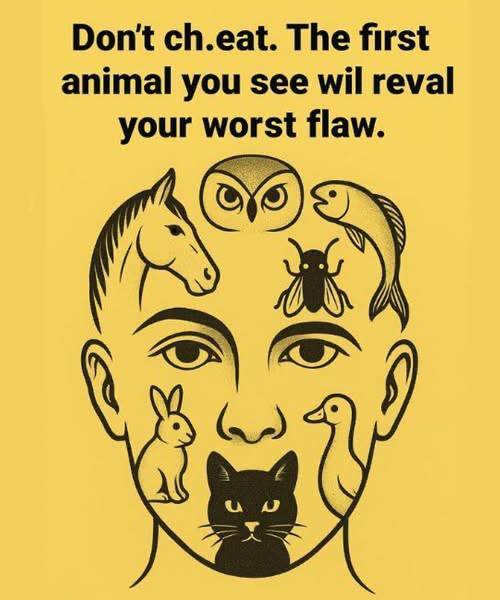Optical illusion personality tests have become hugely popular on social media lately. But these images are more than just eye-catching puzzles—they provide an intriguing glimpse into how our minds react to what we see. Unlike standard personality quizzes filled with questions, these tests rely on your immediate, instinctive response to a single complex picture. The very first thing your eyes focus on can hint at hidden parts of your personality and mental habits.
One well-known example includes a detailed drawing blending several animals and shapes into one image. Depending on which figure you spot first—whether it’s a horse, cat, owl, fish, beetle, rabbit, or duck—you can learn something surprising about yourself.
For example, spotting the owl first suggests you might be deeply analytical but prone to overthinking details. Seeing the rabbit might mean you’re highly empathetic and sensitive to others’ feelings. If the horse is your first focus, you could be independent and determined, though perhaps hesitant to ask for help.
These illusions work because our brains use shortcuts called “perceptual biases” to quickly understand what we see. We rely on familiar patterns and experiences, which shape what we notice right away. This automatic response can reveal our values, emotional reactions, and subconscious behaviors.
Beyond just entertainment, optical illusion tests can spark meaningful self-reflection. They invite you to ask why you saw certain images first and whether that matches how you think of yourself or how others might see you. Sharing and comparing these experiences with friends can lead to fascinating conversations about the uniqueness of each mind.
However, it’s important to remember that these tests are not scientific tools for diagnosing or fully understanding personality. They’re just fun, lighthearted ways to explore your inner world and inspire curiosity about how your brain processes information.
In a time when personal growth is cherished, even simple activities like watching an optical illusion closely can offer new insights into your strengths and challenges. The next time one of these illusions pops up on your feed, pause and try it out. Observe what your brain picks out before your conscious thoughts kick in. That first impression might reveal more about how you see and live in the world than you expected—and maybe teach you something new about yourself.


